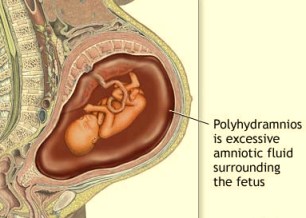

There are many possible reasons for the condition and in many cases, the trigger can't be found (Beloosesky and Ross 2018). More pregnancy videos It's often difficult to pinpoint the cause of polyhydramnios, particularly if it is mild (Beloosesky and Ross 2018, Carter 2017, SMFM et al 2018). What causes polyhydramnios?The extra fluid could be due to a health issue with you, or your baby, or it may be related to the placenta (NHS 2017a).įind out more about the amazing organ that's your unborn baby's lifeline.

When this delicate balance is disturbed, the volume of amniotic fluid can increase (Ross and Beall 2018). This is how the volume of fluid around him is regulated. Your baby will regularly swallow amniotic fluid, which then passes out of his body as urine. Normally, the amount of fluid around your baby gradually increases until there is between 880ml (1.4 pints) and a litre (1.8 pints) surrounding him at about 36 weeks (Carter 2017).įrom 38 weeks onwards, the fluid then gradually begins to reduce, until you’re ready to give birth (NHS 2018, Ross and Beall 2018). The fluid also protects your baby against infection, as well as helping his lungs to develop (Ross and Beall 2018, NHS 2018). The amniotic fluid surrounding your baby protects him from being hurt if you have a blow to your tummy, or if your tummy is squashed (Ross and Beall 2018, NHS 2018). Most cases of polyhydramnios are mild or moderate (SMFM et al 2018).

Polyhydramnios happens in about one in 100 pregnancies (Beloosesky and Ross 2018, Carter 2017, SMFM et al 2018), so it isn't common. It's the opposite of oligohydramnios, when amniotic fluid levels are low. What is polyhydramnios?Polyhydramnios means you have too much amniotic fluid in your womb (uterus). What are the best ways to cope with polyhydramnios?.How will polyhydramnios affect my baby's birth?.How will I know if I have polyhydramnios?.


 0 kommentar(er)
0 kommentar(er)
